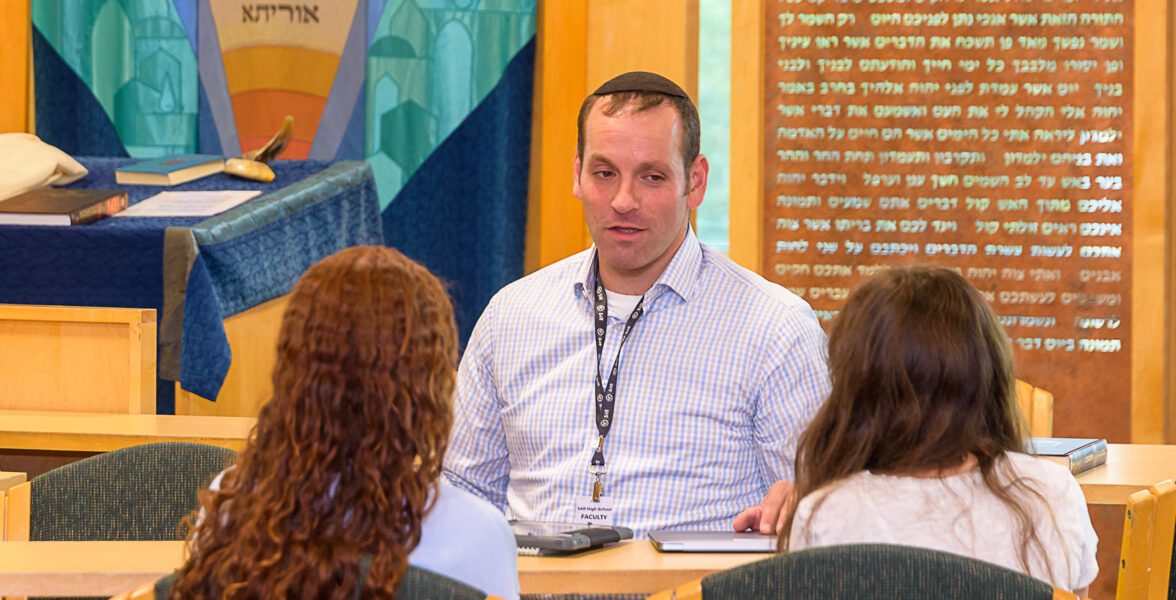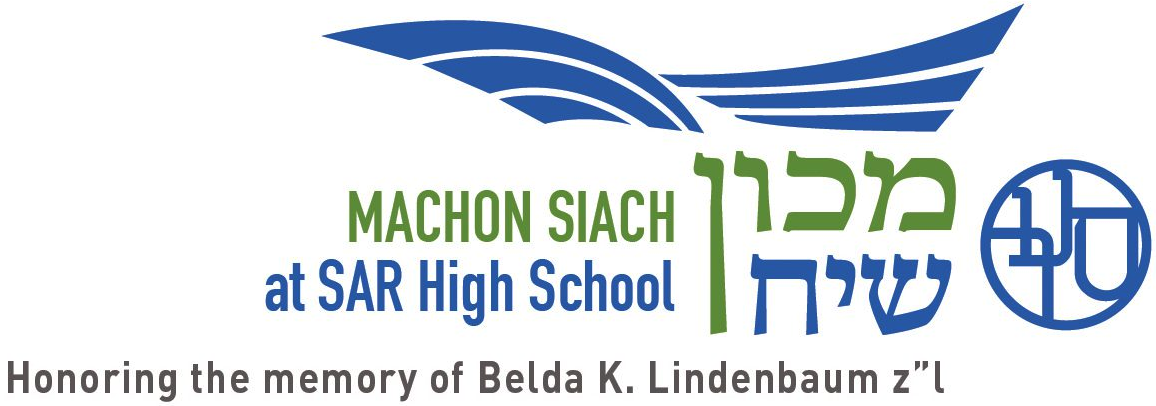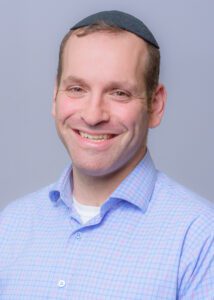
Creating a Sense of Achrayut in a Transformational Moment
After nearly six months away from school, the idea of returning to in person schooling is exciting and invigorating for students, teachers and parents alike. But imagine being a student and all that going to school was, well, school. Going from class to class, sitting six feet apart from classmates, not being able to engage in a side conversation with a friend because it’s difficult to hear the words coming out from underneath each other’s masks, high fives and hugs outlawed and an escape to an across the street eatery off limits – it might feel that all that’s left is class.
Now, don’t get me wrong, class at SAR High School is the best, but how do you make the Hive feel like a home without a Rosh Chodesh chagigah, a bustling Beit Midrash or sitting amongst friends in the art studio after school? The administration, along with the Student Activities team, spent the summer thinking about how to make the school year enjoyable and filled with the ruach of a typical SAR High School student experience, even during a pandemic, without skipping a beat.
But where to start? The guiding principle for all that we do this year was born out of a brainstorming session which led to the formulation of this year’s theme אחריות responsibility; our responsibility toward one another is what this year is all about.
At a recent meeting of our Themed Programming Council (one of the branches of Student Government) one of the council members told me that the theme of אחריות was important but also very generic; it seemed like we could run any program we wanted and easily come up with a way of explaining how it was an example of אחריות. The comment stuck with me and I decided to survey some Torah sources to come up with a definition of אחריות which would help guide us in teaching to our theme developing programming and more generally making school fun while maintaining shared responsibility toward one another. In my 12th grade Tanakh class we study Sefer Breishit and so it was there that I turned first and found two examples of אחריות before finding another toward the beginning of Sefer Shemot.
The first example of אחריות is a failure – a complete abdication of responsibility on behalf of Kayin after he murdered his brother Hevel. In an attempt to elicit a confession out Kayin Hashem asked Kayin about the whereabouts of his now deceased brother to which Kayin gave his well known response:
וַיֹּאמֶר ה׳ אֶל־קַיִן אֵי הֶבֶל אָחִיךָ וַיֹּאמֶר לֹא יָדַעְתִּי הֲשֹׁמֵר אָחִי אָנֹכִי׃
The LORD said to Kayin, “Where is your brother Hevel?” And he said, “I do not know. Am I my brother’s keeper?” (Breishit 4:9)
While Kayin is the antithesis of אחריות the paradigm for אחריות is Miriam. When her mother made the fateful decision to put baby Moshe in a basket and place it in the Nile his older sister Miriam watched from the reeds. In his wonderful collection of sermons Rabbi Shai Held quotes Dr. Devora Steinmetz who points out a similarity in the Torah’s language in the stories of Kayin and Miriam. Kayin remarked ״לא ידעתי. השומר אחי אנכי?״ “I don’t know [where my brother is]. Am I my brother’s keeper?” On the other hand in describing why Miriam stood to watch baby Moshe the Torah says ״לדעה מה יעשה לו״ – “To know what would be done to him.” What are we to make of the fact that the Torah invokes familiar language when describing Miriam’s actions? Rabbi Held insightfully writes:
Cain does not know and does not care…Miriam immediately wants to know and thus demonstrates the depth of her care. She is from the start her brother’s sister…Miriam at the Nile is [Cain’s] antithesis, the paragon of moral responsibility, standing ready to save her brother.
While Miriam’s אחריות is selfless a more realistic example one which we can through our educational programming teach our students to model is found in the life story of Yehuda. In the heartbreaking episode of Yosef and his brothers it was Yehuda who suggested that Yosef be sold as a slave. Yehuda did not seek to save his brother because the thought of murdering his own brother was abhorrent but rather he argued there was no profit in murder. After the sale the narrative of Sefer Breishit departs from the Yosef saga to tell us about the untimely deaths of two of Yehuda’s sons as well as the story of Yehuda and Tamar. The pain coupled with his own admission of guilt and acceptance of responsibility in the case of Tamar transformed Yehuda. When the Torah returns to the Yosef narrative and it seemed like Yehuda’s youngest brother Binyamin was going to be imprisoned and enslaved in Egypt it was Yehuda who stepped forward putting his own life on the line to save Binyamin.
What led Yehuda to exhibit such bravery, to take responsibility for the life of his brother after acting with such evil intent toward another brother? And more importantly, what is it that we can learn from Yehuda’s actions? Writes Rabbi Held,
…The Torah knows that most of us live in the messy and complicated space between Cain and Miriam: We step up to embrace our responsibilities only sporadically and erratically. Even when we accept our duties in principle, we often fail to fulfill them in practice, sometimes egregiously. So the Torah tells us of Judah, the paradigm of a man who is transformed by painful experience, who learns to care and to take responsibility. Through his story, we too are summoned to become our brother’s brothers.
As a community we too have been transformed by the physical and social-emotional toll of the pandemic. We are expected to wear face coverings and maintain social distancing despite the physical and emotional discomfort that come along with them because we have an אחריות to do our part to stop the spread of the virus. If we can stop the spread of the virus within our community we can continue to have in person learning and hopefully emerge from the pandemic sooner than later. As teachers and administrators we have an אחריות toward our students to reimagine what we do to make school enjoyable when so many of the usual tools we employ are off limits. In a school year which will likely be without Shabbatonim or sitting arm in arm at a tisch we have an אחריות toward our student body to develop new programming which will engage and inspire. Toward that end, we worked to shorten the school day and added twice monthly Student Activities periods to our students’ schedules. For two hours a month students will come together as a grade to have fun, learn about our theme, hear from guest speakers and much more.
The reality of our current circumstances made it difficult to have our clubs whose memberships typically span all four grades to meet in person during the school day; with students remaining in their assigned zones each day (another practical demonstration of אחריות) and one grade learning remotely Activity Period – a thrice monthly staple of the school schedule was no longer a possibility. Typically at the beginning of the school year during our back to school night for parents I implore parents to review our co-curricular offerings with their children and to make sure that they participate in these enriching activities. This year it seemed like we were creating the scenario which I typically describe as one which would create unhappy children – a student arrives at school goes from class to class goes home does homework and repeat. We call them co-curriculars and not the traditional extra-curriculars because we believe that these clubs and activities go hand in hand with the curriculum and are an equally important part of a well rounded education. To solve this issue we decided to end the school day earlier on Wednesdays (3:35PM) to enable an at home Zoom activity period. While not ideal the at home activity period will allow students to participate in co-curriculars and have more free time at night now that there is no longer a need to take a late bus home.
Beginning of a new school year in which we are able to return to in person learning serves as a sign that we are beginning (there’s still a long road ahead of us) to emerge from a very painful period in the history of the world. A virus which at the time this is being written has infected 27,722,275 people around the world resulting in over 900,000 deaths with over 189,000 in the United States alone. Read those numbers again; it is truly staggering. This year we aim to emerge from the pain with a newfound responsibility toward one another. As an administration and faculty we aim to do that by teaching what it means to demonstrate אחריות by following the protocols set forth by our public health experts; this responsibility includes teaching teenagers to see beyond themselves and how their actions impact the community and world at large. And it means that we have an אחריות toward our students to make this school year not only one filled with learning in the classroom but also one which is fun and spirited.



